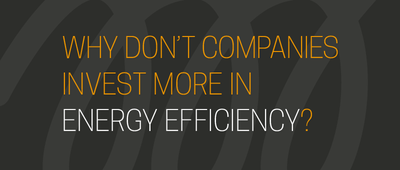Columnists: Joe Ritchie, International Energy Agency ; Brian Motherway, International Energy Agency (IEA)


Published on: 2 Nov 2018
Realising the global potential of energy efficiency – the very first fuel
Energy efficiency is the cornerstone of a secure and sustainable global energy system and the very first fuel in tackling the global climate challenge. These messages have been clearly established by the International Energy Agency (IEA) through our recent Energy Efficiency 2018 publication and Global Conference on Energy Efficiency. The challenge now is to ensure that energy efficiency remains at the forefront of policymakers’ thoughts when developing energy transition strategies, something made all the more urgent in light of the recent report from the Intergovernmental Panel on Climate Change (IPCC).
Energy Efficiency 2018, the latest in the IEA’s market report series, is the most extensive analysis the IEA has ever published on energy efficiency, particularly as it features a special World Energy Outlook Efficient World Scenario (EWS). The EWS provides a scenario of what cost-effective energy efficiency measures, based on existing technology, can deliver between now and 2040.
At a global level, the Efficient World Scenario shows that GDP could double between now and 2040, for only a marginal increase in energy demand, an impressive finding and positive economic message for energy efficiency, but the benefits highlighted by the EWS go well beyond that.
Energy efficiency alone can result in a peak in global emissions before 2020, which would then fall to levels 12% below today by 2040, contributing over 40% of the emissions abatement required by 2040 to be in line with the Paris agreement. Energy efficiency is therefore indispensable to meeting global climate mitigation targets.
Other benefits that we highlight in this year’s market report include improvements in energy security through a reduction in the need for imports, with Europe benefitting from around USD 200 billion in avoided import expenditure in 2040. Globally, USD 600 billion and USD 500 billion in industry and household energy spending, respectively, could be avoided by 2040. Air pollutant emissions would also be one third lower than today, avoiding an estimated 1 million premature deaths linked to indoor air pollution.
The potential benefits highlighted by the EWS are substantial, but the world is not on course to realise this opportunity. While efficiency gains since 2000 prevented 12% more energy use and emissions in 2017, its impact is being overwhelmed by rising activity levels across all sectors, with changing consumer behaviour also affecting global energy demand, which rose by nearly 2% in 2017, the fastest rate this decade. The IEA continues to emphasize the importance of government policy in driving these efficiency gains. However, the slowing rate of implementing new or strengthened efficiency policies that we witnessed in 2016 continued in 2017.
The efficiency gains presented by the Efficient World Scenario and the policies and measures required to realise this potential constitute the IEA’s Efficient World Strategy, which we highlight throughout Energy Efficiency 2018. Mandatory policies, such as minimum energy performance standards and building energy codes, underpin the Efficient World Strategy across transport, buildings and industry, but we must also recognise the importance of other measures that complement mandatory policies.
Incentives and improvements in the quality of and access to information and capacity building resources will be vital to changing behaviours and encouraging individuals and companies to pursue higher levels of energy performance. There is also a growing interest in the use of market-based instruments for energy efficiency, something the IEA analysed last year.
Policy efforts also need to create an environment that will enable greater levels of energy efficiency investment. To realise the potential of the EWS, average annual energy efficiency investment will need to double between now and 2025 and then double again to 2040. Current investment trends will not realise the potential of the EWS and continuing and expanded efforts to develop new business models for energy efficiency will be needed.
While current trends in 2017 may appear troubling, discussions at the IEA’s recent Global Conference on Energy Efficiency do show that there is certainly no lack of positive intent. In announcing its partnership with the IEA on energy efficiency investment, the European Investment Bank made clear its desire to drive greater levels of energy efficiency investment, so that it can follow a similar path to that of renewable energy. As host country for next year’s G20 meeting, Japan also noted its intention to put energy efficiency front and centre, leveraging its extensive efforts over many years, to push for greater action in other major economies.
The IEA’s Global Conference also reinforced that while countries use different measures to pursue energy efficiency, the challenges they face have striking similarity. Energy efficiency policy is, in many cases, still considered separate from core energy and economic policy. As such, its centrality to the global energy transition is lost. Expanded and strengthened international collaboration will help energy efficiency policy get the attention it requires, and at the IEA we welcome the opportunity to play an important role in enabling this collaboration. But we must recognise that realising the potential of energy efficiency requires action from all levels of government, industry and, importantly, individuals.







